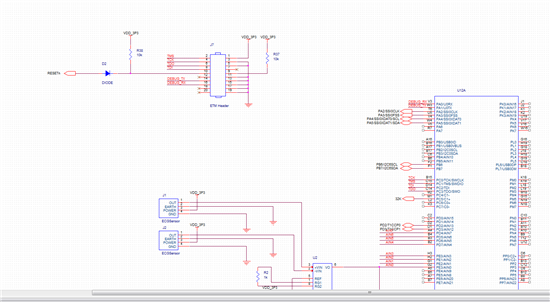Hi,
I custom-designed the board with TM4C129XNCZAD, and I have trouble to connect it via JTAG.
How I am trying to do that is using DK-TM4C129X. Previously I succeeded that with two DK-TM4C129X, but for now, I can't connect it via JTAG.
I'm using LM Flash Programmer (Build 1588), and I can't even do hardware reset for new custom board.
I mimicked the interface of DK-TM4C129X on my custom board, which is 20 pin ETM interface.
I know my question is too naive, but if you find anything I am overlooking, please reply me.
Thanks.


